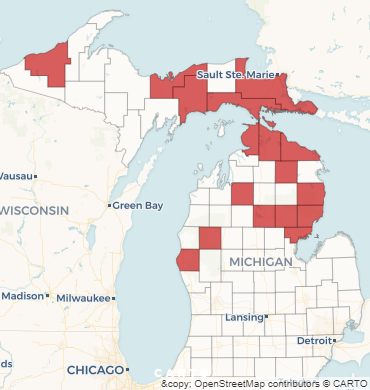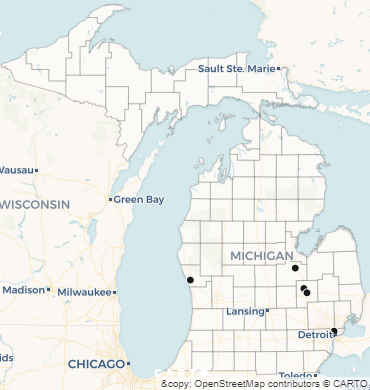Michigan Medicaid reform and race: Maps explain controversy
White vs. black. Northern vs. southern. Rural vs. urban. Republican vs. Democrat.
The divisions are being exposed as Michigan lawmakers debate a bill that would require Medicaid recipients to work 29 hours a week.
That’s sparked racial accusations because the bill would exempt residents who live in counties with unemployment rates of 8.5 percent or higher. Residents of cities with similar jobless rates, however, wouldn’t be exempt.
Related Michigan Medicaid work requiremet stories:
- Racial accusations embroil Michigan Medicaid reform debate
- Will Michigan’s Medicaid work bill fill jobs or save money? No one knows
- Where Michigan governor candidates stand on Medicaid work requirements
- Opinion: Beware of unintended consequences of Michigan Medicaid work demand
Here’s a look at maps that shape the debate. First, the 17 largely rural, largely white counties that would be exempted. Click on a county to see the unemployment rate and demographics.
But there are six cities, mostly African-American, that also have high unemployment rates. Those areas aren’t being exempted because they are surrounded by counties with lower jobless rates. Click the cities to see their unemployment rates and demographics.
Some critics say the exemptions would punish urban poor folks and favor rural ones. The exempted counties, for instance, have a population of roughly half of all of Detroit.
Would be exempt

- 17 counties*
- 303,600 people
- 88.7 percent white
- 0.7 percent black
- Unemployment: 11 percent
- All counties represented
by Republican senators
Counties: Mackinac, Cheboygan, Presque Isle, Montmorency, Alger, Roscommon, Schoolcraft, Arenac, Ontonagon, Ogemaw, Chippewa, Emmet, Lake, Alcona, Iosco, Oceana and Kalkaska
Would not be exempt

- Six municipalities*
- 894,000 people
- 16.9 percent white
- 71.8 percent black
- Unemployment: 9 percent
- All but two represented
by Democratic senators
Municipalities: Detroit, Flint, Saginaw, Muskegon, Highland Park, and Mount Morris Township
The areas that would benefit most are areas that are represented by Republicans. Four of the six cities with elevated unemployment levels are represented by Democrats.
Sources: U.S. Census, Michigan Bureau of Labor Market Information and Strategic Initiatives
See what new members are saying about why they donated to Bridge Michigan:
- “In order for this information to be accurate and unbiased it must be underwritten by its readers, not by special interests.” - Larry S.
- “Not many other media sources report on the topics Bridge does.” - Susan B.
- “Your journalism is outstanding and rare these days.” - Mark S.
If you want to ensure the future of nonpartisan, nonprofit Michigan journalism, please become a member today. You, too, will be asked why you donated and maybe we'll feature your quote next time!

